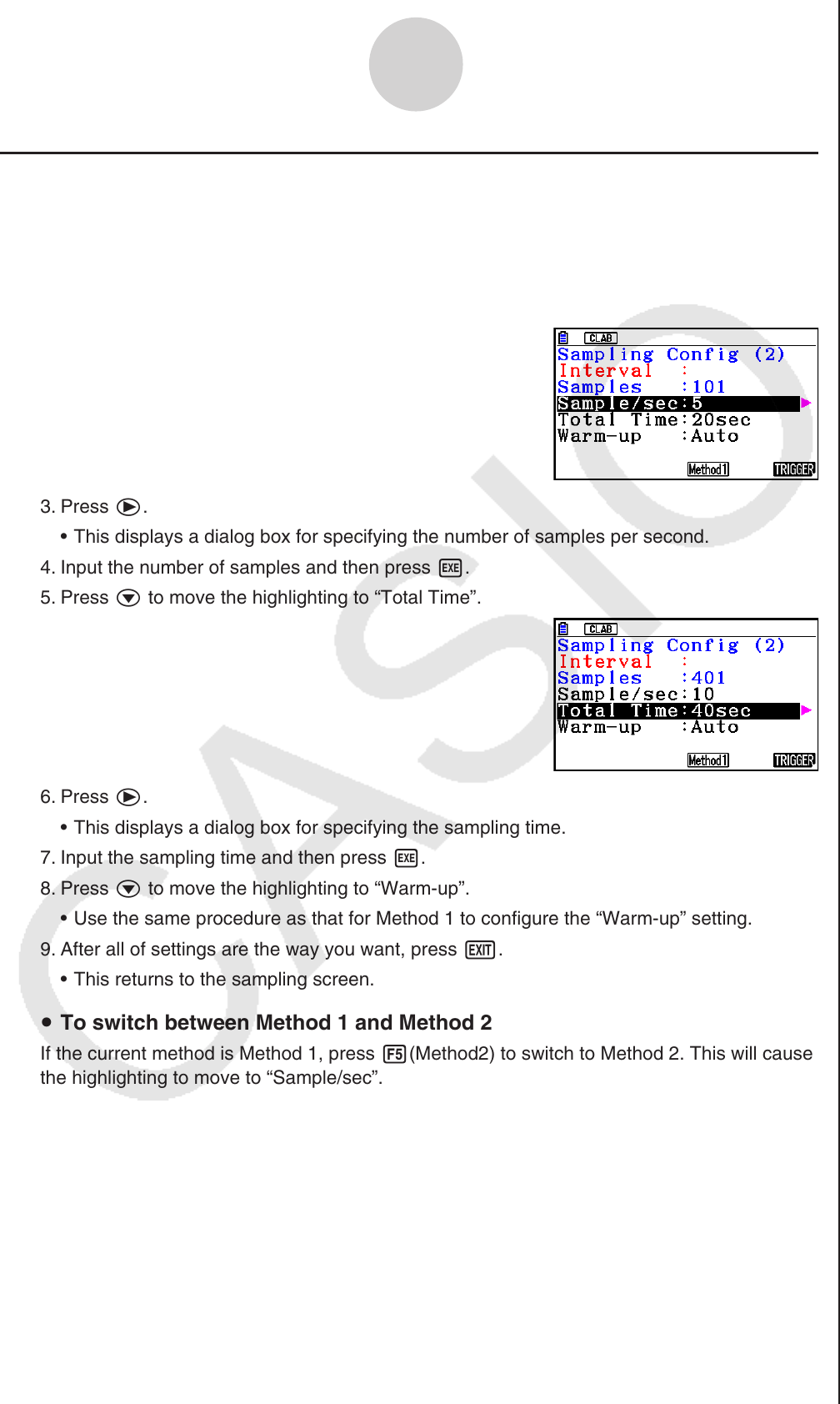User Manual
Table Of Contents
- Contents
- Getting Acquainted — Read This First!
- Chapter 1 Basic Operation
- Chapter 2 Manual Calculations
- 1. Basic Calculations
- 2. Special Functions
- 3. Specifying the Angle Unit and Display Format
- 4. Function Calculations
- 5. Numerical Calculations
- 6. Complex Number Calculations
- 7. Binary, Octal, Decimal, and Hexadecimal Calculations with Integers
- 8. Matrix Calculations
- 9. Vector Calculations
- 10. Metric Conversion Calculations
- Chapter 3 List Function
- Chapter 4 Equation Calculations
- Chapter 5 Graphing
- 1. Sample Graphs
- 2. Controlling What Appears on a Graph Screen
- 3. Drawing a Graph
- 4. Saving and Recalling Graph Screen Contents
- 5. Drawing Two Graphs on the Same Screen
- 6. Manual Graphing
- 7. Using Tables
- 8. Modifying a Graph
- 9. Dynamic Graphing
- 10. Graphing a Recursion Formula
- 11. Graphing a Conic Section
- 12. Drawing Dots, Lines, and Text on the Graph Screen (Sketch)
- 13. Function Analysis
- Chapter 6 Statistical Graphs and Calculations
- 1. Before Performing Statistical Calculations
- 2. Calculating and Graphing Single-Variable Statistical Data
- 3. Calculating and Graphing Paired-Variable Statistical Data (Curve Fitting)
- 4. Performing Statistical Calculations
- 5. Tests
- 6. Confidence Interval
- 7. Distribution
- 8. Input and Output Terms of Tests, Confidence Interval, and Distribution
- 9. Statistic Formula
- Chapter 7 Financial Calculation
- Chapter 8 Programming
- Chapter 9 Spreadsheet
- Chapter 10 eActivity
- Chapter 11 Memory Manager
- Chapter 12 System Manager
- Chapter 13 Data Communication
- Chapter 14 Geometry
- Chapter 15 Picture Plot
- Chapter 16 3D Graph Function
- Appendix
- Examination Mode
- E-CON4 Application (English)
- 1. E-CON4 Mode Overview
- 2. Sampling Screen
- 3. Auto Sensor Detection (CLAB Only)
- 4. Selecting a Sensor
- 5. Configuring the Sampling Setup
- 6. Performing Auto Sensor Calibration and Zero Adjustment
- 7. Using a Custom Probe
- 8. Using Setup Memory
- 9. Starting a Sampling Operation
- 10. Using Sample Data Memory
- 11. Using the Graph Analysis Tools to Graph Data
- 12. Graph Analysis Tool Graph Screen Operations
- 13. Calling E-CON4 Functions from an eActivity

ε-14
Configuring the Sampling Setup
Using Method 2 to Configure Settings
1. On the sampling screen, press 2(CONFIG).
This displays the Sampling Config screen.
2. Press 5(Method2).
This will cause the highlighting to move to “Sample/sec”.
3. Press e.
This displays a dialog box for specifying the number of samples per second.
4. Input the number of samples and then press w.
5. Press c to move the highlighting to “Total Time”.
6. Press e.
This displays a dialog box for specifying the sampling time.
7. Input the sampling time and then press w.
8. Press c to move the highlighting to “Warm-up”.
Use the same procedure as that for Method 1 to configure the “Warm-up” setting.
9. After all of settings are the way you want, press J.
This returns to the sampling screen.
To switch between Method 1 and Method 2
If the current method is Method 1, press 5(Method2) to switch to Method 2. This will cause
the highlighting to move to “Sample/sec”.
If the current method is Method 2, press 4(Method1) to switch to Method 1. This will cause
the highlighting to move to “Interval”.
If the highlighting is located at “Warm-up”, it will not move when you switch from Method 1 to
Method 2.
Switching from Method 1 to Method 2 will cause Method 2 values to be automatically
calculated and configured in accordance with the values you input with Method 1. Values are
also automatically calculated when you switch from Method 2 to Method 1.
k
•
•
•
•
•
•
u










